It’s just past 5 a.m. and I’m sitting in my suite at The Plaza hotel, high up above the grimy streets of downtown Las Vegas. On the horizon, beyond the gold brick Trump Tower, beyond the needle of the Stratosphere, beyond the shimmering lights of the city, I can make out the hazy outline of the Spring Mountain range that separates the Vegas basin from the open Mojave Desert.
In a few hours, I am going to cross those mountains, drop down into California and head in the direction of my next NSFWCORP assignment: I’m moving to Victorville, California, a gnarly desert bubble suburb that inflated faster and popped harder than almost any other place in the West.
I know Victorville well. Maybe too well. . . I moved there in early 2009 to get a first-hand sense of what life was like in a subprime city in the wake of the worst financial crash since the Great Depression. I rented a brand new three-bedroom house equipped with a master bedroom, whirlpool bathtub, centralized air conditioning and a spacious two-car garage, located in a half-empty “master-planned community” on the edge of town.
I thought it would be fun and ridiculous, an adventure—like deep sea diving down to a shipwreck. But I quickly learned that it was grimmer and scarier, and more educational than I ever expected.
At first I planned on staying no more than six months, but became so absorbed in the horror of what I saw and learned there, I ended up staying for nearly two years. I reported on local real estate swindles, pissed off the city’s corrupt political elite, made the front page of the local libertarian-founded newspaper and became so obsessed with Victorville politics that I seriously considered running for a spot on the city council. In the end, I nearly lost my mind due to the extreme isolation, as well as the development of an unhealthy chemical habit. I had to flee the city, and it took me more than a year of convalescing on the beaches of Venice, California, to get my health and sanity back.
Now, four years after I first moved to Victorville, I finally have strength and the moral fortitude to venture back. . .
Why Victorville?
Victorville is as pure a specimen of a bubble city as you can find in this great nation of ours. It’s a city built purely on speculation and fraud. Even out here in the land of real estate bubbles, it stood in a class of its own.
Located on the edge of the inhospitable Mojave Desert, 100 miles east of Los Angeles, Victorville is perhaps the most barren, most remote exurb commuter town in Southern California. About an hour’s drive from the nearest population center, the sprawling city is bounded by endless desert to the east, south and north, and a 4,000-foot mountain range that runs along its western edge—like the Shield Wall of Arrakis, a natural barrier separating the desert and all its horrors from the coastal civilization.
It used to be a tiny military town, but the local air force base closed down in 1992. There were no jobs here, no industry to speak of. But that didn’t stop developers from leveling the tumbleweeds and Joshua trees, replacing them with mazes of curvy streets and shoddily built McTractHome palaces, and then pimping Victorville as a mecca of affordable homeownership and boundless economic opportunity, a place where the American Dream was within reach of all. It didn’t matter how much you earned, or even if you had a steady job. Your friendly mortgage brokers at Countrywide and Washington Mutual had just the right kind of loan for you. And don’t worry if you couldn’t understand how it works. That’s why Wall Street paid its securitization wizards the big bucks!
In other words: Victorville was built for no other reason than to fleece lower-income suckers. And there were a lot of suckers to be had.
By the end of 2007, Victorville became the second-fastest growing city in America. Its population had nearly doubled in less than a decade, increasing from 60,000 in 2000 to over 100,000 by the end of the bubble.
With tens of thousands of new commuters dutifully burning through billions of gallons of gasoline as they climbed a 4,000-foot mountain twice a day on their commute, oil companies joined with the real estate developers and banks in milking this new homeowner population for cash. The American Dream just kept on giving!
Here’s how Victorville’s “Economic Development Department” (aka as the taxpayer-funded public relations arm of KB Homes and Countrywide Financial) pitched the city to prospective homeowners in 2006, at the peak of the real estate bubble:
High desert living in Victorville offers outstanding opportunities for plentiful, secure employment, home ownership, higher education, safe neighborhoods and nearby desert, lake and mountain recreation. Victorville has 20 parks, two municipal golf courses, highly rated schools, truly affordable housing and so much more. Where else in Southern California can families find starter homes in the low $200,000s, and executive homes in gated communities starting at $475,000?
“Victorville offers outstanding opportunities for plentiful, secure employment, home ownership, higher education . . .” Sounds nice, doesn’t it? Two years later, the lie came crashing down hard and fast.
McTractHome prefab palaces that had sold for $500,000 at the peak of the bubble in 2006 were now selling for a tenth of the price. In an attempt to shore up prices, banks restricted supply by keeping their bulk of their empty foreclosed properties off the market. In some cases, they even took a wrecking ball to their own empty homes—shelling out money for upkeep and paying property taxes simply wasn’t worth the investment anymore.
Entire neighborhoods emptied out, with families seeming to vanish overnight as if fleeing some monstrous plague in a wild panic, leaving behind photo albums, computers, clothes and TVs. But people didn’t necessarily leave town, they simply started renting McTractHomes from absentee investor-landlords, who were snapping up foreclosed properties at cents on the dollar.
During the boom, the bulk of the city’s newest inhabitants came in at the low end of the socio-economic spectrum, a disproportionate number of them were low-income Latino and African-American families, earning half the average California per-capita income. Many moved to Victorville because they really believed in the dream: they wanted to move out of the inner city and barrio, away from the gangs and cramped life of the ghettoized poor. But the bursting of the bubble exposed the fraud, showing what was really going on: these people didn’t leave the ghetto; the ghetto left the inner city.
By the time I showed up, Victorville was quickly becoming a scary post-apocalyptic suburban ghetto. Half the adult population was unemployed; its public schools were among the worst in the state, with a shocking dropout rate of 50%. Violent crime was soaring, even as crime rates in nearby Los Angeles (and most other cities across the country) were dropping to historic lows. Helicopter gunships cruised the skies day and night looking for criminals. Strip malls were emptying out while liquor stores did brisk business. Several new jails and prison facilities had been built around Victorville. In fact, I could see one of them—a massive three-in-one federal prison complex—from my porch. Not surprisingly, Victorville developed the highest parolee population in the county. Turns out, the prison-industrial complex is a growth industry in a post-bubble subprime city.
If all this wasn’t bad enough, the pre-subprime demographic—white ex-military types—were beginning to boil over with rage, staging Tea Parties and talking of ethnic war against the Latinos and blacks who had suddenly invaded their idyllic desert paradise.
An isolated desert exurb with one of the highest foreclosure rates in the state, no jobs, a thriving prison industry, a huge population of ex-cons, rising ethnic tensions and an astronomical crime rate? It was a toxic, and scary, mix. Three of my cul-de-sac neighbors were burglarized in the span of a few months, and someone attempted to break into my house as well. One afternoon, I watched from my window as a couple of bored school kids broke down the fence of a neighboring foreclosed house just for fun. Kids or not, I took to keeping a loaded 357 magnum within reach of my bed.
Case-in-point: Over the course of one week in the month of October, 2009, there were four bank robberies, a triple homicide, a string of deadly shootings and a foiled drive-by—and that’s not counting all the usual petty crime and DUI manslaughter stuff.
Here, from the Victorville Daily Press, is one of the crimes from that week, a Clint Eastwood-inspired scuffle that went down a few blocks from my house:
‘Gran Torino’ part two Army vet fires at gang member BY BEATRIZ E. VALENZUELA … After learning a man in a suspicious vehicle had threatened his brother and family, an Army veteran in his camouflage gear grabbed his weapon and fired a shotgun blast at the passing vehicle being driven by a gang member, according to Karen Hunt, spokeswoman for the San Bernardino County Sheriff’s Victorville station. No one was hit in the incident Tuesday. Investigators later arrested the driver, Ty Clemmons, for making terrorist threats, authorities confirmed. The shooter was taken to a local hospital for a psychiatric hold, Hunt said. The single shotgun projectile became lodged in the garage of a couple’s home about 200 feet away. “We only moved in about two months ago and I was very nervous yesterday,” said Rosa Cervin, 22, who was at home at the time with her 2-year-old child.
And here’s another, a bloody shoot ’em up straight outta No Country for Old Men that took place in a neighboring suburb:
Three slain in Phelan; suspect arrested October 05, 2009 11:02 AM FROM STAFF REPORTS PHELAN • A 55-year-old man allegedly gunned down three people whose bodies were found on a road outside a local residence, according to San Bernardino County Sheriff’s officials. Deputies from the Victor Valley sheriff’s station responded to 911 calls about a shooting around 7:50 p.m. Sunday in the 4500 block of Begonia Road. Phelan residents Adam Owen, 41, Robert Light, 40, and Angela Leird, 45, were found in the roadway with gunshot wounds to the upper body. All were pronounced dead at the scene by paramedics. Officials arrested suspect Dennis Flechtner, 55, of Phelan. Flechtner was booked into Victor Valley Jail and is being held without bail, officials said.
By the time I packed a U-Haul truck and headed back towards civilization, Victorville was once again one of the fastest growing cities in the state. This post-bubble population growth was not made of lower-income first-time homeowners, but the poorest of renters—a large number of them were minorities on Section 8 vouchers—who had been forced out of cities by rising living costs, skyrocketing real estate prices and the demolishing of inner city public housing.
So the subprime boom was not only a money-making machine designed to enrich bank executives and land developers, it also resulted in a mass resettlement of lower-income Americans, a market-based population transfer that moved the poor out of denser urban zones and into the middle of nowhere, forcing them to eke out an existence stranded in an isolated area with zero opportunity, zero jobs and zero hope for jobs in the near future. Interestingly enough, this was exactly what some thinktank types had been proposing cities do with their with their inner-city public housing projects: turn them into private condos and ship their former residents to Southern California’s abandoned exurbs.
Meanwhile, the local government was collapsing under the weight of its own fraud and corruption. A number of city officials were being investigated by the SEC and facing indictment by a grand jury for shady deals with Goldman Sachs, GE and various real estate developers. There was also the city’s questionable relationship with a shriveled old Orange County developer by the name of Buck Johns who seemed to take a cut of every municipal development project, receiving millions in lucrative consulting fees, even as the projects always seemed to fail and lose huge amounts of taxpayer money—and is even now involved in a strange project to run a hi-speed train from Victorville to Vegas.
Victorville, on the brink of bankruptcy, took to squeezing its residents: jacking up water, garbage and recycling fees to replenish the city’s empty coffers.
Victorville was a fucked up wreck, but it was also a very familiar fucked up wreck—a microcosm of Modern America, a well-oiled system that’s built on speculation, suckers and financial fraud . . . And I’m eager to see how it’s been shaping up in my absence.
Now, it’s getting late. Tomorrow morning, I head out on the road.
Read next: Back to Victorville, Part Two: The Prison Is Hiring…
***
This article was originally published by NSFWCORP.
Read more: california, crash, gulag, real estate, subprime, victorville, yasha levine, Yasha Levine, Dispatch, NSFWCORP


Got something to say to us? Then send us a letter.
Want us to stick around? Donate to The eXiled.
Twitter twerps can follow us at twitter.com/exiledonline




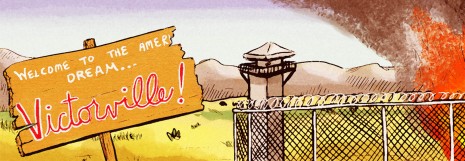

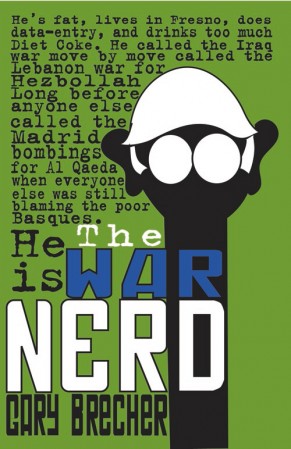

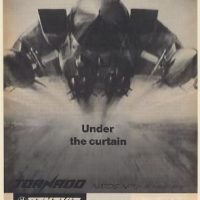
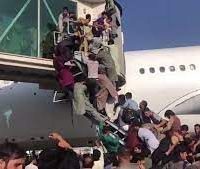



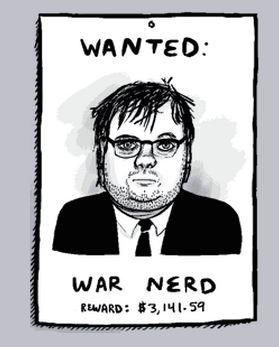

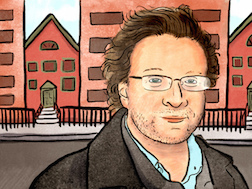
Leave a Comment
(Open to all. Comments can and will be censored at whim and without warning.)
Subscribe to the comments via RSS Feed